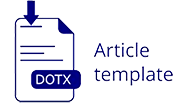Illocutionary Speech Acts Analysis in Nadhira Afifa's Speech Harvard University graduation as a student speaker in 2020
Abstract
Abstract
The purpose of this study is to clarify the types of intraverbal acts in Nadira Affifa's speech as a student speaker in the Master's program in public health in 2020 after graduating from Harvard University. This study focused on the types of intra-speech behavior promoted by Yule (1996). This study used qualitative explanations by analyzing Nadira's speech as the main data. In addition, the source of the data for this survey was collected by downloading audio and video from YouTube. The data is then analyzed and converted into a document. In addition, the data was grouped into five types of spoken diplomatic behavior. The findings prove that there are four types of spoken diplomatic behavior used in Nadira's speech. They were representative, expressive, instructive, and authoritative. In this term, there is no declarative intra-speech act type. Apparently, the preferred mode of spoken diplomatic activity was typical. That semester, Nadilla provided information about the importance of being part of the public health of the day she was worried about. In the meantime, the percentages showed the most used and least used types of spoken diplomatic behavior throughout Nadira's speech. They were representative (56.4%), expressive (30.7%), directive (5.1%), binding (7.7%), and declarative (0%). This means that representative and expressive ones are prioritized. This happens because the speaker giving the context and speech is the speaker of the graduation student.
Keywords
References
REFERENCES
Alshorafat, O. ., Atta, F., & Rasheed, S. (2019). International Journal of Linguistics , Literature
and Translation ( IJLLT ) ISSN : 2617-0299. International Journal of Linguistics, Literature
and Translation, 2(3), 177–182.
Austin, J. L. (1962). How do to Things with Words (p. 167). Oxford University Press.
Chairani, M., Sofyan, D., & Hardiah, M. (2020). Journal of English Education and Teaching
(JEET), 2(2), 9–19.
Chankova, M. (2019). Rejecting and challenging illocutionary acts. Pragmatics, 29(1), 33–56.
Creswell, J. W. (2012). Research Design (Qualitative, Quantitative, and Mixed Methods
Approaches). SAGE Publication.
Cruse, A. (2000). Meaning in Language: An Introduction to Semantics and Pragmatics (Oxford
Textbooks in Linguistics). Oxford University Press.
Denscombe, M. (2010). The Good Research Guide for small-scale social research projects. In Mc
Graw Hill Open University Press (Fourth Edi). Mc Graw Hill. Open University Press.
Dibdyaningsih, H., & Chakim, M. A. (2019). An Analysis of Teacher Speech Act in Giving
Motivation for English Students. 2(02), 218–229.
Fitria, T. N. (2019). An analysis of directive speech act found in “koi mil gaya” movie. Journal
of Pragmatics Research, 1(2), 89–99.
Haucsa, G. M., Marzuki, A. G., Alek, A., & Hidayat, D. N. (2020). Illocutionary Speech Acts
Analysis in Tom Cruise’S Interview. Academic Journal Perspective : Education, Language,
and Literature, 8(1), 11.
Hidayat, D. N., Septiawan, Y., & Sufyan, A. (2020). Critical discourse analysis and its potential
for english language teaching: A study on beauty advertisement products in Indonesia. Asian
ESP Journal, 16(22), 271–297.
Husain, A., Hamamah, H., & Nurhayani, I. (2020). Commissive Speech Act in Indonesian
Presidential Debate. OKARA: Jurnal Bahasa Dan Sastra, 14(1), 81.
Hutajulu, F. S. L., & Herman, H. (2019). Analysis of Illocutionary Act in the Movie “You Are
My Home” English Subtitle. JEES: Journal of English Educational Study, 2(1), 29–36.
Ilma, R. (2007). Speech Acts in English Language Teaching. Iranian Journal of Language
Studies, 1(2), 143.
Larasanti, D., Arjulayana, & Srikandi, C. N. (2020). an Analysis of Illocutionary Acts in Donald
Trump ’ S Presidential Candidacy Speech. 9(1), 7–13.
Mufiah, N. S., & Nur Rahman, M. Y. (2018). Speech Acts Analysis of Donald Trump’S Speech.
PROJECT (Professional Journal of English Education), 1(2), 125.
Nassaji, H. (2015). Qualitative and descriptive research: Data type versus data analysis. Language
Teaching Research, 19(2), 129–132.
Paltridge, B. (2008). Discourse Analysis (First Edit). Continuum.
Praditya, D. J. I. M., Putra, A. J. I. N., & Artini, L. P. (2014). An Analysis of Speech Acts in the
Conversation Between Habibie and Ainun in the Film Entitled Habibie and Ainun 2012.
Journal of English Education Department, Postgraduate Program Ganesha University of
Education Singaraja, Indonesia, 2(1), 1–10.
Putri, et all. (2019). an Analysis of Speech Act Used in Harry Potter and. International Journal of
Language and Literature, 3(2), 3–6.
Rahayu, F. N., Arifin, M. B., & Ariani, S. (2018). Illocutionary Act in the Main Characters.
Mulawarman University, 2(2), 175–187.
Rais, B., & Triyono, S. (2019). Pragmatic Analysis of Speech Acts on The Video of Prabowo Vs
Jokowi - Epic Rap Battles Of Presidency. Ijllt, 2(3), 150–157.
Rosyidi, A. Z., Mahyuni, M., & Muhaimi, M. (2019). Illocutionary Speech Acts Use by
Jokowidodo in First Indonesia Presidential Election Debate 2019. International Journal of
Multicultural and Multireligious Understanding, 6(2), 735.
Sameer, I. H. (2017). The analysis of speech acts patterns in two Egyptian inaugural speeches.
Studies in English Language and Education, 4(2), 134.
Sartika, E., Marzuqoh, S., & Majid, K. (2019). The Analysis of Declaration of Illocutionary Acts
of the Korean- English Drama “ I Hear Your Voice .” 1(1), 30–42.
Searle, H. (1969). Speech Act (An Essay in The Philosophy of Language). Cambridge University
Press.
Tutuarima, Z., Nuraeningsih, N., & Rusiana, R. (2018). An Analysis of Speech Act Used in
London Has Fallen Movie. Vision: Journal for Language and Foreign Language Learning,
(2), 122.
Widiastuti. (2020). The Pragmatic Study of Speech Act Analysis in Discussion Activities on
Speaking Learning. Eduvelop, 3(2), 64–72.
Yule, G. (1996). Pragmatics. Oxford University Press.
DOI: https://doi.org/10.34001/edulingua.v9i2.3497
Article Metrics
Refbacks
- There are currently no refbacks.

Ciptaan disebarluaskan di bawah Lisensi Creative Commons Atribusi 4.0 Internasional.











